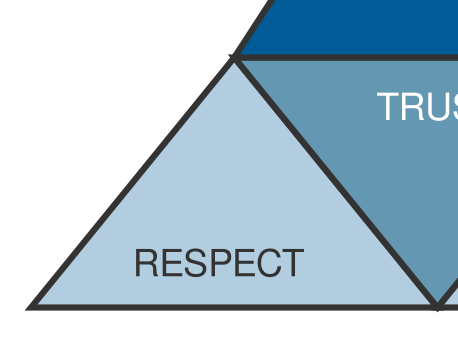Building a successful client relationship starts with earning their respect. This isn’t about deference; it’s about demonstrating that you value them as an individual, their time, their expertise in their own business, and their perspective. As the base of our “RSTC” pyramid, respect must be consistently present in every interaction.
Here’s how to cultivate genuine respect:
1. Value Their Time Above All Else:

- Be Punctual: Always be on time for meetings, calls, and deadlines. Tardiness signals a lack of respect for their schedule.
- Be Prepared: Do your homework before engaging. Understand their industry, their company (as much as possible), and the context of your interaction. This shows you haven’t come to waste their time getting up to speed on basics you could have researched.
- Be Concise: Get to the point efficiently. While friendly rapport is important, don’t fill time with irrelevant rambling. Structure your communication clearly.
- Manage the Clock: Be mindful of the agreed-upon time for a meeting. If you need more time, ask respectfully rather than assuming.
2. Truly Listen and Value Their Perspective:
- Listen Intently (Responsive): Your natural strength is in waiting to respond. Apply this by truly listening to understand their needs, challenges, and goals before jumping to solutions. Avoid interrupting. Focus completely on what they are saying.
- Acknowledge and Validate: Show that you’ve heard them. Use phrases like, “That’s a really important point,” “I understand what you’re saying about [specific point],” or “Thank you for explaining that perspective.”
- Ask Thoughtful Questions: Demonstrate your respect for their expertise in their business by asking insightful questions that show you’re thinking deeply about their situation, not just running through a generic checklist.
- Don’t Assume You Know Best (About Their Business): You are the expert in IT, but they are the expert in their operation. Respect that. Frame your suggestions as ways your expertise can support their goals and improve their processes.
3. Maintain Professionalism and Courtesy:
- Be Consistently Courteous: Basic politeness – “please,” “thank you,” “excuse me” – goes a long way. Maintain a calm, composed demeanor, even if the conversation is challenging.
- Communicate Clearly (Inform): While this also ties into Safety, communicating in language they understand shows respect. Avoid excessive jargon or explain technical terms clearly and concisely. Keep them informed about next steps or potential changes, respecting their need for information.
- Be Honest and Transparent: If you don’t know the answer, say so and commit to finding it. If there’s a delay, explain why. Dishonesty erodes respect instantly.
- Respect Boundaries: Be mindful of their preferred communication methods and times.
4. Demonstrate Competence and Reliability (Laying Groundwork for Trust):
- Do What You Say You Will Do: Even small commitments build respect. If you promise to send an email by Tuesday, send it by Tuesday.
- Exhibit Competence (Practical Solutions): While competence builds trust, consistently demonstrating your knowledge and ability to offer practical, effective solutions earns respect. Show them you are capable of addressing their needs efficiently.
Connecting to “This is Me”:
Your natural responsive and intuitive style is a powerful asset for fostering respect. By waiting to respond, you avoid imposing yourself and signal that their agenda is the priority. Your strength in listening intently allows you to truly value their perspective and expertise. Your focus on practical solutions demonstrates that you respect their need for real results and won’t waste their time on theoretical ideas that don’t fit their context. Consistently applying your natural way of working inherently builds the respect necessary for the relationship to grow.
In short: To earn respect, consistently show clients that you value them – their time, their knowledge, their perspective, and their needs. This foundation makes it possible to build trust and, eventually, a strong client relationship.
If this post is resonating with you, keep reading — the posts below could help you take the next step.
Interpreting Client Reactions – The Unspoken Response
Understanding body language, facial expressions, and tone is a vital layer of communication. For you,…
Building a Trusted Partnership – A Consultative Flow
My approach to engaging with potential clients is inspired by the idea of structured steps,…
Interactive RSTC Presentation
RSTC Method Slide Deck Chief Cook and Bottle Washer Building Strong Client Partnerships: Respect, Safety,…
Building Strong Client Partnerships: The RSTC Method
Introduction: Building Our Special Client Tower! (3 min) Speaker Notes: Imagine we’re building a big,…
10 Skeptical, Challenging Questions
1.Introducing Myself to a Client Approach
This introduction blends your professional background with your natural, responsive, and practical approach, subtly laying…
